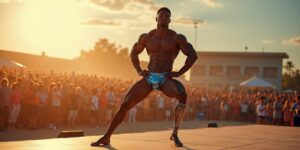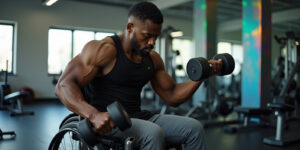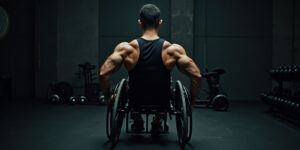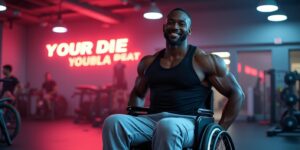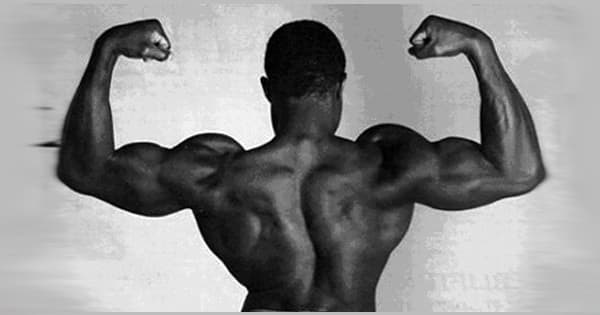
When you think of bodybuilding, the first image that comes to mind is probably someone with a chiseled physique, lifting weights with ease. But what about those who face challenges due to medical conditions such as scoliosis? Scoliosis is a condition in which the spine curves abnormally, making it difficult for the person to maintain proper posture and execute weightlifting exercises correctly.
In this blog, we will explore how scoliosis affects bodybuilding and discuss strategies that bodybuilders with scoliosis can use to overcome these challenges. We will also share success stories of bodybuilders who have defied the odds and achieved their goals despite their medical condition.
So if you are a bodybuilder with scoliosis or know someone who is, this blog is for you.
What is Scoliosis and its impact on Bodybuilding
Scoliosis is a condition in which the spine curves to the side abnormally. It can occur at any age, but it is most common in children and adolescents. The exact cause of scoliosis is unknown, but it is thought to be a combination of genetic and environmental factors.
There are three main types of scoliosis:
- Idiopathic scoliosis is the most common type, and it has no known cause.
- Congenital scoliosis is present at birth and is caused by a problem with the development of the spine.
- Neuromuscular scoliosis is caused by a neurological disorder, such as cerebral palsy or spina bifida.
The severity of scoliosis can vary widely. In some cases, the curvature is so mild that it is not noticeable. In other cases, the curvature can be severe and can cause pain, difficulty breathing, and other health problems.
Bodybuilding is the use of progressive resistance exercise to control and develop one’s muscles (muscle hypertrophy) by building muscle mass and strength, athletic performance, and overall physique. By progressively overloading the muscles with weight, they respond by adapting and increasing in size and strength.
Scoliosis can have a significant impact on bodybuilding. The curvature of the spine can make it difficult to perform certain exercises and can also lead to muscle imbalances. For example, people with scoliosis may have difficulty squatting or deadlifting because these exercises put a lot of stress on the spine. Additionally, people with scoliosis may have weaker muscles on one side of their body than the other. This can lead to muscle imbalances and can make it difficult to build a symmetrical physique.
Despite these challenges, it is possible to build muscle and strength with scoliosis. However, it is important to work with a qualified personal trainer who can develop a safe and effective exercise program.
Here are some tips for bodybuilding with scoliosis:
- Start slowly and gradually increase the weight and intensity of your workouts.
- Focus on compound exercises that work multiple muscle groups at once.
- Avoid exercises that put a lot of stress on your spine, such as squatting and deadlifting.
- Use lighter weights and do more repetitions to help build muscle endurance.
- Listen to your body and stop any exercise that causes pain.
If you have scoliosis and are interested in bodybuilding, it is important to talk to your doctor first. They can help you determine if bodybuilding is safe for you and can provide you with guidance on how to develop a safe and effective exercise program.
How does Scoliosis affect weightlifting practices?
Weightlifting practices can be affected by Scoliosis in bodybuilders. Proper form, posture, and alignment are crucial to minimize the risk of injury. Bodybuilders with scoliosis may need to be cautious with exercises that strain the spine. Supportive equipment and gradual progression can help overcome challenges.
How can strengthening and stretching exercises help manage Scoliosis in bodybuilding?
Incorporating strengthening and stretching exercises into a bodybuilding routine can help manage Scoliosis. Exercises like lunges and squats improve stability, while stretching exercises enhance flexibility and relieve muscle tension. Strengthening the core muscles provides added support to the spine and improves posture, reducing the risk of further curvature progression. Targeting back muscles can also alleviate discomfort and improve overall posture.
Success stories: Bodybuilders overcoming the challenges of Scoliosis
There are several inspiring stories of bodybuilders who have overcome the challenges of scoliosis, a condition characterized by an abnormal curvature of the spine. While it might present physical limitations, determination, discipline, and the right mindset can help individuals achieve remarkable feats. Here are a few examples of bodybuilders who have successfully managed scoliosis and excelled in their sport:
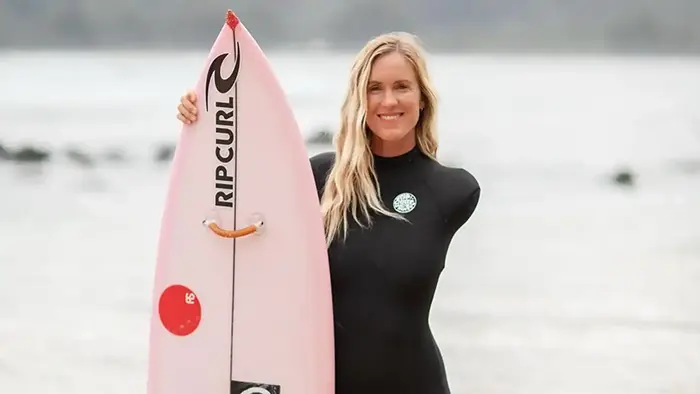
Bethany Hamilton:
Bethany Hamilton, a professional surfer rather than a bodybuilder, is a remarkable example of overcoming physical challenges. She lost her left arm in a shark attack at the age of 13. Despite this, she continued pursuing her passion for surfing and became a professional surfer. Her story of resilience and determination has inspired people around the world.
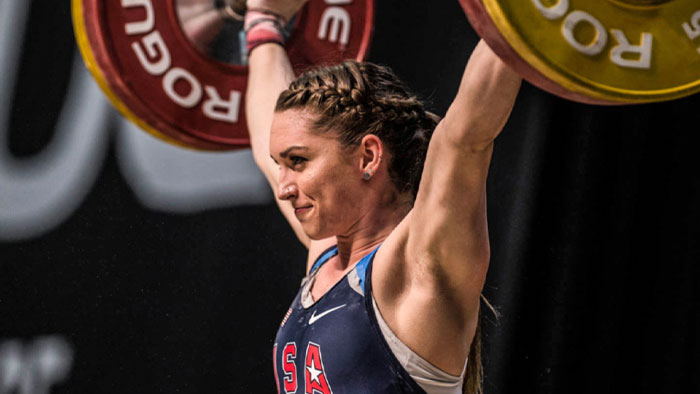
Mattie Rogers:
Mattie Rogers is a weightlifter who has competed at the international level. She has scoliosis but has not let it hinder her athletic pursuits. Rogers is vocal about her condition and uses her platform to raise awareness about scoliosis. Her dedication and achievements in weightlifting serve as an inspiration to others facing similar challenges.
this, she continued pursuing her passion for surfing and became a professional surfer. Her story of resilience and determination has inspired people around the world.
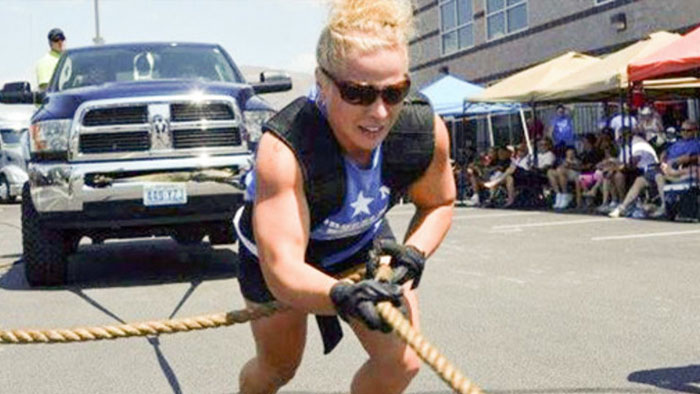
Rachel Pyron:
Rachel Pyron, diagnosed with scoliosis at a young age, turned to bodybuilding as a way to improve her strength and posture. She didn’t let her condition limit her and used weightlifting to build a strong and healthy body. She has shared her journey online, inspiring others with scoliosis to pursue their fitness goals.

Blake Beckford:
Blake Beckford, a British bodybuilder, was diagnosed with ulcerative colitis and later developed scoliosis. Despite his health challenges, he became a successful bodybuilder and fitness model. He uses his social media presence to motivate others, proving that with determination and hard work, one can overcome physical limitations.
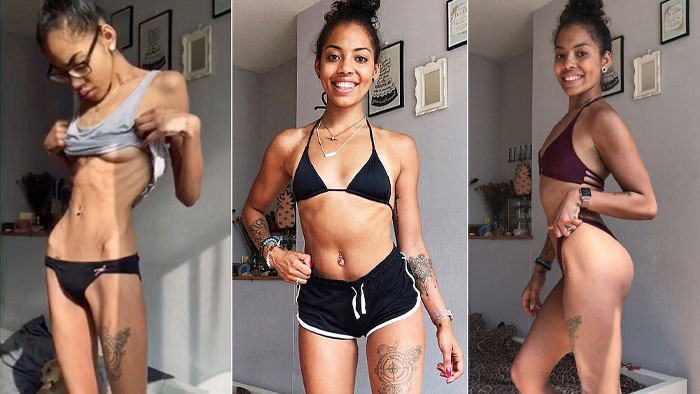
Holly Griffith:
Holly Griffith, a fitness competitor and personal trainer, was diagnosed with scoliosis at a young age. She refused to let her condition define her and pursued her passion for fitness. Through her dedication to bodybuilding, she not only transformed her body but also became a source of inspiration for others dealing with scoliosis.
These stories highlight the power of determination and a positive mindset in overcoming physical challenges. While scoliosis can present obstacles, these individuals have proven that with the right attitude and hard work, one can achieve remarkable success in bodybuilding and other athletic pursuits.
Let’s Sum Up
In conclusion, these success stories of bodybuilders with scoliosis serve as a reminder that our physical limitations should not define our capabilities. With determination, perseverance, and proper guidance from healthcare professionals, it is possible to overcome the challenges posed by scoliosis and excel in the world of bodybuilding. These individuals are an inspiration to us all, proving that with the right mindset and dedication, we can break through barriers and achieve greatness.
So, if you have scoliosis and dream of pursuing bodybuilding, don’t let your condition hold you back. Seek expert advice, adapt your training routine, and work towards your goals with passion and resilience.


